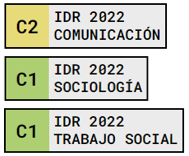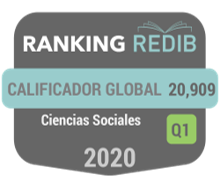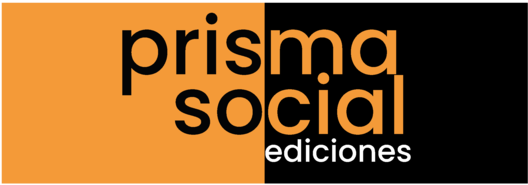Unboxing and brands: youtubers phenomenon through the case study of evantubehd
Palabras clave:
YouTube, children, teens, adolescents, brands, influence, prescription, engagementResumen
The general objective of this paper is to go deeper into the youtubers phenomenon as opinion leaders, therefore, the importance of these people as prescriptors for children and teenagers. Specifically, we propose to analyse the case of Evan Snyderan American child who, at the age of eight, (2011) began to use YouTube to comment on video games. While his number of followers increased, the themes of his videos became more and more diverse. We have carried out a content analysis of Evan Snyder's youtube channel. The variables to be examined are: brands which appear in the videos, the sectors to which they belong, as well as video types. The results show that his leadership starts in the first period when the teenager develops his personality and specialization.
Unboxing y marcas: el fenómeno youtubers a través del estudio de caso de evantubehd
Resumen
El objetivo general de este artículo es profundizar sobre el fenómeno de los youtubers como líderes de opinión, y por lo tanto, su importancia como prescriptores para niños y adolescentes. En concreto, se propone estudiar el caso de Evan Snyder, un niño norteamericano que con ocho años (2011) comenzó a utilizar Youtube para comentar videojuegos. Mientras el número de seguidores aumentaba, las temáticas de sus vídeos se diversificaron. Se ha llevado a cabo un análisis de contenido del canal de Evan Snyder. Las variables analizadas son: las marcas que aparecen los vídeos, los sectores a los que pertenecen, así como los tipos de vídeos. Los resultados muestran que su liderazgo comenzó en sus primeros años cuando el niño desarrolló su propia personalidad y especialización.
Descargas
Citas
BIEL, J. I., & GATICA-PEREZ, D. (2011). Call me Guru: user categories and large-scale behavior in YouTube. In Hoi, Steven CH et al., eds. Social Media Modeling and Computing (chapter 8, 167-188). London: Springer-Verlag. doi: 10.1007/978-0-85729-436-4
BRUNS, A. (2006). Towards Produsage: Futures for User-Led Content Production. In Sudweeks, Fay and Hrachovec, Herbert and Ess, Charles, Eds. Proceedings Cultural Attitudes towards Communication and Technology, (pp. 275-284), Tartu, Estonia.
BURGESS, JEAN E. & GREEN, JOSHUA B. (2008). Agency and Controversy in the YouTube Community. In Proceedings IR 9.0: Rethinking Communities, Rethinking Place - Association of Internet Researchers (AoIR) conference, IT University of Copenhagen, Denmark.
CARRIÓN, J. (2014). El fin del periodismo está siendo televisado. In Angulo, María, Crónica y mirada. Aproximaciones al periodismo narrativo. (pp. 123-140). Madrid: Libros del K.O.
CHAU, C. (2010). YouTube as a participatory culture. New directions for youth development (128), 65-74. doi: 10.1002/yd.376
CHECKOWAY, B. N., & GUTIÉRREZ, L. M. (2009). Teoría y práctica de la participación juvenil y el cambio comunitario (Vol. 9). Barcelona: Grao.
CHO, J., KEUM, H., & SHAH, D. V. (2014). News Consumers, Opinion Leaders, and Citizen Consumers Moderators of the Consumption–Participation Link. Journalism & Mass Communication Quarterly, doi: 10.1177/1077699014554766.
ERSTAD, O. (2010). Content in Motion: Remixing and Learning with Digital Media. In Kirsten Drotner & Christian Schrøder. Digital Content Creation: Perceptions, Practices, & Perspectives (pp.38-57). New York: Peter Lang.
FERRERAS, M. (2014). Los siete hábitos de la Generación C. In Ron, Rodrigo; Álvarez, Antón; y Núñez Patricia. Bajo la influencia del "branded content": efectos de los contenidos de marca en niños y jóvenes (pp. 73-82). Madrid: Escuela Superior de Gestión Comercial y Marketing, ESIC.
GOLOVINSKI, M. S. (2011). Event 3.0: How Generation Y and Z Are Re-Shaping the Events Industry. Lulu.com.
HODBOD, J., & VAN LEEUWEN, R. (2011). Exploring Product information leaks in marketing communications and product development. Course: BUSM08 Master thesis in business administration, Specialisation in International Marketing & Brand Management. Lund School of Economics & Management. Lund University, Sweden.
JENKINS, H. (2006). Convergence culture: Where old and new media collide. NYU press.
KAHNE, J., MIDDAUGH, E., ALLEN, D., ITO, M., GUTIÉRREZ, K., LIVINGSTONE, S., & SCHOR, J. (2014). Youth, New Media, and the Rise of Participatory Politics. Working Papers, 1.
KATZ, E. & LAZARSFELD, P.F. (1955). Personal influence: The part played by people in the flow of mass communication. Glencoe, IL: Free Press.
KRIPPENDORFF, K. (1990). Metodología del análisis de contenido. Teoría y Práctica. Barcelona: Paidós Ibérica, S.A
LANGE, P. G. (2014). Kids on YoutTube. United States: Left Coast Press.
LYONS, B., & HENDERSON, K. (2005). Opinion leadership in a computer‐mediated environment. Journal of Consumer Behaviour, 4(5), 319-329.doi: 10.1002/cb.22
MARSHALL, D. (Ed.) (2010). Understanding children as consumers. London: Sage.
MARSH, J. (2015). ‘Unboxing’ videos: co-construction of the child as cyberflâneur. Discourse: Studies in the Cultural Politics of Education, 1-12. doi:10.1080/01596306.2015.1041457
MEJIA, S. C. (2013). Fair Play: Copyright Issues and Fair Use in YouTube' Let's Plays' and Videogame Livestreams. Retrieved from: http://goo.gl/URX5CT
MUÑOZ, B. (2012). Negociación de la participación en YouTube. In De la Peña, Gabriela & Gervasi, Francesco (Coords.), La investigación de la comunicación y su incidencia social. Análisis sobre la construcción del campo de estudio y la producción de conocimiento. Memorias XXIV encuentro nacional AMIC 2012, (pp-55-64). Méjico: Universidad Autónoma de Coahuila.
NUENO, J. L. (2010). In Hermoso de Mendoza, Carmelo. Marketing Infantil: Niños, un mercado con Futuro. IPMARK, marketing + comunicación, 738, 40-43. Retrieved from: http://goo.gl/jgL7B8
RAMDURAI, G. (2014). Think Gaming Content Is Niche? Think Again. Retrieved from: https://goo.gl/JSG4n4
RODRÍGUEZ, D. (2013). Memecracia. Los virales que nos gobiernan. Barcelona: Ediciones Gestión 2000.
ROGERS, E.M. (2003). Diffusion of innovations (5th ed.). New York: Free Press.
SCHOR, J. (2010). In Hermoso de Mendoza, Carmelo. Marketing Infantil: Niños, un mercado con Futuro. IPMARK, marketing + comunicación, 738, 40-43. Retrieved from: http://goo.gl/jgL7B8
SILCOFF, M. (2014) A Mother’s Journey Through the Unnerving Universe of ‘Unboxing’ Videos. New York Times Magazine, 44. Retrieved from: http://goo.gl/gn4utA
STERN, S. (2008). Producing Sites, Exploring Identities: Youth Online Authorship. Youth, Identity, and Digital Media. Edited by David Buckingham. The John D. and Catherine T. MacArthur Foundation Series on Digital Media and Learning. Cambridge, MA: The MIT Press. 95–118. doi: 10.1162/dmal.9780262524834.095
TORNERO, J. M. P.; FERNÁNDEZ, N., SIMELIO, N., PAREDES, O., & TEJEDOR, S. (2009). Study on assessment criteria for media literacy for the European Commission. Final report. Retrieved from: http://goo.gl/fLmBDk
WEBER, R. (2015). Digital Tweens: YouTube and the Rise of Clustersharing. The Marketing Store & KidSay. Retrieved from: http://goo.gl/jI4MDS
WEINMANN, G. (1994). The Influentials: People who influence people. New York: State University of New York Press.
Descargas
Publicado
Cómo citar
Número
Sección
Licencia
Los autores/as que publiquen en esta revista aceptan las siguientes condiciones:
- Los autores/as conservan los derechos de autor.
- Los autores/as ceden a la revista el derecho de la primera publicación. La revista también posee los derechos de edición.
- Todos los contenidos publicados se regulan mediante una Licencia Atribución/Reconocimiento-SinDerivados 4.0 Internacional. Acceda a la versión informativa y texto legal de la licencia. En virtud de ello, se permite a terceros utilizar lo publicado siempre que mencionen la autoría del trabajo y a la primera publicación en esta revista. Si transforma el material, no podrá distribuir el trabajo modificado.
- Los autores/as pueden realizar otros acuerdos contractuales independientes y adicionales para la distribución no exclusiva de la versión del artículo publicado en esta revista (p. ej., incluirlo en un repositorio institucional o publicarlo en un libro) siempre que indiquen claramente que el trabajo se publicó por primera vez en esta revista.
- Se permite y recomienda a los autores/as a publicar su trabajo en Internet (por ejemplo en páginas institucionales o personales), una vez publicado en la revista y citando a la misma ya que puede conducir a intercambios productivos y a una mayor y más rápida difusión del trabajo publicado (vea The Effect of Open Access).


















